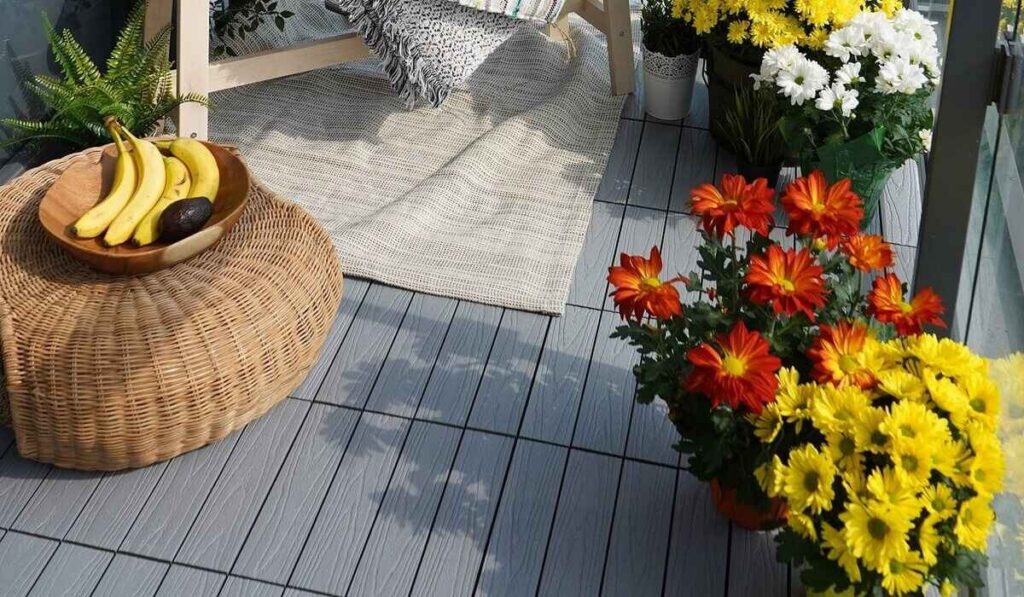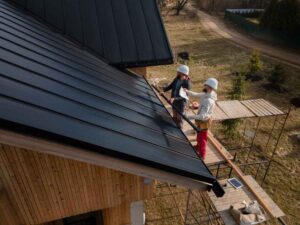How Composite Decking Helps Reduce Deforestation and Waste

At present, people are aware of environmental issues; thus, those who own homes or are planning to build one do so using sustainable materials. One of the options has been composite decking, which has been adopted by many contractors for constructing decks. So, as more people pay attention to sustainable options for living, products such as composite turn out to be a great choice not only because of their design and practicality but also due to their contribution to minimising deforestation and waste accumulation. The following is a discussion of how composite decking reduces these problems and, as such, acts as a positive step towards green building.
Understanding the Meaning
It is an integration of wood elements, most of them recycled, and plastic components in existence. It forms a strong and low-maintenance material with an aesthetic that resembles naturally sourced lumber to the naked eye but with predictable and improved performance characteristics. It is practical to use for outside areas and does not split, buckle, or fade like wood does as time elapses.
The Role in Reducing Deforestation
The removal of trees is an environmental problem, which is mainly caused by the need for timber products. Tropical forests are being cut down at a rate aimed at obtaining timber and this makes a great impact on the loss of species, increases in the rates of global warming and destruction of habitats in natural environments. One such viable solution is composite, which cuts down the consumption of wooden material to a large extent.
In this case, the homeowners or builders who decide to install composite decks are minimising the use of virgin timber in the market in the first place. This decline prevents the cutting down of trees and the destruction of many of the species that inhabit the forests. Furthermore, the lessening of the bad environmental attitude towards the utilisation of plastic can be attributed to the fact that there is a reduced deposition of plastic that is recycled in the making of composite decks.
Waste Management in Composite Decks
The other important factor that makes sustainability incorporate the use of composite deck is waste reduction. The practised wooden decking is a material that ends up in the dump site upon reaching its useful lifespan. The lifespan of a composite deck is longer than that of a solid wood one, and thus less frequent replacements and, as a result, less amounts of waste are produced.
Besides, the composite deck is also made of recycled products such as recycled plastic waste. This will not only address the issue of plastic waste disposal but also address the problem of raw material consumption. This availability of recycled content in the making of composite deck makes it, in a way, have a positive impact on the concept of circular economy, whereby the raw materials help in recycling the waste products.
Environmental Benefits Beyond Deforestation and Waste
However, other environmental advantages of composite decking that support deforestation and waste prevention would not hold water. Composite materials need not be sourced from natural forests and take a shorter time and less energy to process than pressure-treated wood for use in decking, hence using fewer resources and emitting less carbon in the process. Moreover, using composite material minimises chemical treatment and sealants since the decking is long-lasting as compared to timber and in this process, few hazardous chemicals go into the environment.
Composite deck is also another product that has energy efficiency properties in homes. It doesn’t encourage the development of mould and mildew as it has a tendency not to soak in water as wooden material can and therefore doesn’t promote growth. Additionally, it prevents runoff, and consequently, this causes an environmentally positive control of rainwater.
The Economic Aspect: Deck Cost Considerations
However, if we compare it with the conventional wooden decking material, this may be slightly expensive in the beginning. This, coupled with the fact that composite deck does not degrade as fast as the real deal, thereby requiring little or no repair in the future to give it a longer cycle of use, hence less money is spent. Also, as for the items in maintenance cost, where there are no significant chemical treatments and sealants demanded, the prices are respectively lower.
However, when it comes to the deck cost, one must not only take the initial cost but also the cost over time into account. This type of material has a relatively low cost in the long term and it is fully in line with the environmental and economic principles of modern construction and production.
Conclusion
In the end, the advantages eco-friendly decking options present regarding eco-trendy materials, like composite ones, make them a winning option for handling current problems as well as expected environmental problems. So, to make a decision, it’s no less important to understand both the pros and cons of composite decking. With rising awareness about the environment, the demand for sustainable construction materials is on the rise and engineered decking has great potential to take up an even larger role. A trend in decking for homeowners who wish to provide their homes with beautiful and functional outdoor spaces while being agents of environmental preservation is to choose composite decking.






